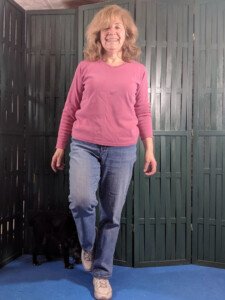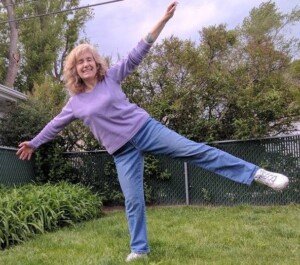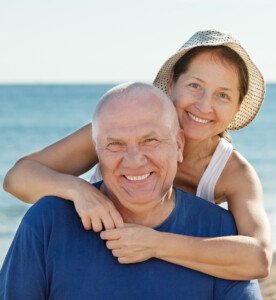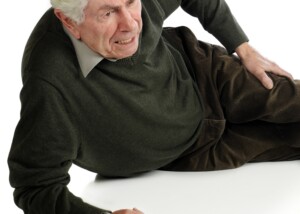Fran Saidel is over 60 and, after falling and injuring herself, discovered some very effective fall prevention balance exercises: no equipment needed.
I’m glad to be getting older. No, really. Get old or die – right?
What they don’t tell you is that getting older involves losing stuff. Your keys, eyesight, hearing. Your sense of balance.
I learned about the balance part the hard way a couple of years ago.
I wasn’t paying attention and fell off the stoop to the back door of my house.
That fall injured my knees and triggered bursitis in both hips.
And that sometimes combines with my sciatica to cause back spasms.
To avoid the ensuing and possibly recurring pain, I educated myself and decided to do something about my deteriorating balance.
It’s completely natural to lose balance as we age. But I also learned that it’s possible to regain some of it. That’s crucial to avoiding falls.
Balance can mean many things. As we age, balance can mean simply being able to walk from the living room to the bedroom without hanging onto something.
Or being able to stand on your tiptoes to reach a higher shelf.
Or stepping onto a stool to reach that shelf.
“Balance” does not necessarily mean being able to perform the “dancer” pose in yoga.
Although once you practice your balance for a while, you might very well want to go back to yoga!
It’s possible to improve your balance in just a couple of minutes a day. Consistency is key. Like anything else, improving your balance takes regular practice.
No Special Equipment Required for Improving Balance
Improving your balance does not require props or any special equipment.
Starting out, you might want to stand close to your kitchen counter if you need to hang onto something.
Start by standing on one foot. That’s something I still do every single day.
The goal is one minute on each foot. If you have to hang onto the counter to start, that’s fine.
Work up to standing away from the counter. And then, when you’re standing away from the counter and have to touch a toe down, that’s okay too. You’ll get stronger.
I do 30 seconds at a time, twice. I find that switching feet can be harder than staying on one foot. And I do this every night while brushing my teeth. Multitasking at its best!

© Fran Saidel
Standing on one foot might seem simple, but it changes the brain, trains your body and makes you focus.
Almost anyone can do this exercise. And it makes it easier to put your pants on. But that’s a bonus to avoiding falls.
Standing on one foot isn’t the only balance exercise I do, but it is the simplest. (Frankly, any balance exercise you do will benefit you.)
Another favorite is the side reach. Standing tall, lean to one side with your legs and arms straight, arms outstretched, your body on one plane.
Then turn your body to face the ground. Return slowly to your starting position.

© Fran Saidel
Repeat on the other side. This exercise changes your perspective and makes you focus in a different way.
I frequently see posts on social media from friends who have fallen over uneven pavement.
In the winter friends have fallen on ice. With just a couple of minutes a day you can train your body to regain your balance and catch yourself, preventing a fall.
Winter can be bad here — lots of ice. I’ve caught myself numerous times in a slip — not a fall!
 Balance for 60+
Balance for 60+
Getting older doesn’t automatically mean falls and broken hips. I’ve created a “Week of Balance” so you can improve yours — an exercise a day that only takes a few minutes. It’s free to download: Week of Balance.
.



























